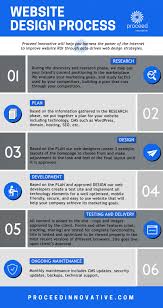Unlocking the Power of SEO and SEM Marketing Strategies
The Synergy of SEO and SEM Marketing
In the digital landscape, Search Engine Optimization (SEO) and Search Engine Marketing (SEM) are two powerful tools that can significantly boost a business’s online presence and drive traffic to their website. While both SEO and SEM focus on improving visibility in search engine results, they differ in their approaches and strategies.
Understanding SEO
SEO is a long-term strategy that aims to improve a website’s organic search ranking. By optimising various elements such as keywords, meta tags, content, and backlinks, SEO helps websites rank higher in search engine results pages (SERPs) for relevant queries. The primary goal of SEO is to increase organic traffic and enhance the website’s authority and credibility over time.
Exploring SEM
On the other hand, SEM involves paid advertising to increase visibility in search engines. This includes Pay-Per-Click (PPC) campaigns where advertisers bid on keywords to display their ads at the top of search results. SEM provides instant visibility and allows businesses to reach their target audience more quickly than organic methods. It also offers detailed analytics to track campaign performance and ROI.
The Power of Integration
While SEO and SEM have distinct advantages, combining both strategies can create a synergistic effect that maximises results. By integrating SEO with targeted SEM campaigns, businesses can dominate both organic and paid search results, increasing their chances of attracting quality traffic and generating leads.
Benefits of Integrating SEO and SEM:
- Comprehensive Visibility: By appearing in both organic and paid listings, businesses can occupy more real estate on search engine results pages, enhancing brand visibility.
- Increase Click-Through Rates: Studies show that combining SEO with PPC ads can lead to higher click-through rates than using either strategy alone.
- Better Keyword Insights: SEM campaigns provide valuable data on high-performing keywords that can inform an organisation’s overall SEO strategy for improved targeting.
- Faster Results: While SEO is a long-term investment, SEM delivers immediate results, making it ideal for short-term promotions or product launches.
In Conclusion
The synergy between SEO and SEM marketing offers businesses a competitive edge in the digital realm. By leveraging the strengths of both strategies effectively, organisations can enhance their online visibility, attract qualified leads, and ultimately drive business growth. Whether focusing on long-term organic growth or immediate paid visibility, integrating SEO with SEM ensures a comprehensive approach to conquering the digital landscape.
Top 8 SEO and SEM Marketing Tips for Enhanced Online Visibility
- Create high-quality and relevant content for your target audience.
- Optimize your website with relevant keywords for better search engine visibility.
- Utilize both on-page and off-page SEO strategies to improve rankings.
- Regularly monitor and analyse your website’s performance using tools like Google Analytics.
- Invest in paid advertising campaigns to complement your organic search efforts.
- Engage with your audience through social media platforms to increase brand visibility.
- Stay updated with the latest SEO trends and algorithm changes to adapt your strategies accordingly.
- Test different SEM techniques such as PPC advertising to find what works best for your business.
Create high-quality and relevant content for your target audience.
Creating high-quality and relevant content tailored to your target audience is a fundamental tip in SEO and SEM marketing. By producing content that addresses the specific needs and interests of your audience, you not only improve your website’s visibility in search engine results but also engage and build trust with potential customers. Quality content that is informative, valuable, and well-targeted can attract organic traffic through SEO efforts and enhance the effectiveness of SEM campaigns by providing a compelling reason for users to click on your ads. In essence, focusing on creating content that resonates with your audience is key to driving traffic, increasing conversions, and ultimately achieving success in the competitive digital landscape.
Optimize your website with relevant keywords for better search engine visibility.
To enhance your search engine visibility effectively through SEO and SEM marketing, it is crucial to optimise your website with relevant keywords. By strategically incorporating keywords that align with your business offerings and target audience’s search queries, you can improve your website’s ranking in search engine results. This practice not only boosts organic traffic through SEO but also enhances the effectiveness of SEM campaigns by ensuring that your ads are displayed to the right audience. Keyword optimisation is a fundamental strategy that lays the foundation for a successful SEO and SEM marketing approach, driving quality traffic and increasing online visibility for your business.
Utilize both on-page and off-page SEO strategies to improve rankings.
To enhance search engine rankings effectively, it is crucial to utilise a combination of on-page and off-page SEO strategies. On-page SEO involves optimising elements within the website itself, such as meta tags, content, and internal linking structure, to improve visibility and relevance to search engines. Off-page SEO focuses on building external factors like backlinks and social signals that demonstrate the website’s authority and credibility to search engines. By incorporating both on-page and off-page strategies, businesses can strengthen their online presence, attract more organic traffic, and ultimately improve their search engine rankings.
Regularly monitor and analyse your website’s performance using tools like Google Analytics.
Regularly monitoring and analysing your website’s performance using tools like Google Analytics is a crucial tip in SEO SEM marketing. By tracking key metrics such as traffic sources, user behaviour, and conversion rates, you can gain valuable insights into the effectiveness of your SEO and SEM strategies. This data allows you to identify areas for improvement, optimise your campaigns, and make informed decisions to enhance your online presence. Continuous monitoring ensures that you stay agile in adapting to changes in search engine algorithms and user trends, ultimately driving better results for your business.
Invest in paid advertising campaigns to complement your organic search efforts.
To maximise your online visibility and reach a wider audience, consider investing in paid advertising campaigns to complement your organic search efforts. Paid advertising, such as Pay-Per-Click (PPC) campaigns, can provide immediate visibility on search engine results pages and target specific keywords to attract relevant traffic to your website. By integrating paid advertising with your SEO strategies, you can create a comprehensive approach that combines the long-term benefits of organic search with the instant impact of paid campaigns, ultimately boosting your online presence and driving more qualified leads to your business.
Engage with your audience through social media platforms to increase brand visibility.
Engaging with your audience through social media platforms is a crucial tip in SEO and SEM marketing to enhance brand visibility. By actively interacting with your followers, sharing relevant content, and responding to comments and messages, you can build a strong online presence that resonates with your target audience. Social media provides a platform for fostering relationships, increasing brand loyalty, and driving traffic to your website. Incorporating social media engagement into your overall SEO and SEM strategy can significantly boost brand awareness and attract more potential customers to your business.
Stay updated with the latest SEO trends and algorithm changes to adapt your strategies accordingly.
It is crucial to stay updated with the latest SEO trends and algorithm changes to adapt your strategies accordingly in the realm of SEO SEM marketing. Search engine algorithms are constantly evolving, and keeping abreast of these changes ensures that your digital marketing efforts remain effective and competitive. By staying informed about industry developments, you can adjust your SEO and SEM strategies to align with current best practices, maximising your online visibility and driving targeted traffic to your website. Embracing a proactive approach to staying informed allows businesses to stay ahead of the curve and maintain a strong presence in the ever-changing digital landscape.
Test different SEM techniques such as PPC advertising to find what works best for your business.
To maximise the effectiveness of your SEO SEM marketing strategy, it is crucial to experiment with various SEM techniques, such as PPC advertising. By testing different approaches, including keyword targeting, ad copy variations, and bidding strategies, you can identify the methods that yield the best results for your business. This iterative process of trial and refinement allows you to optimise your SEM campaigns to reach your target audience effectively and achieve optimal ROI.

